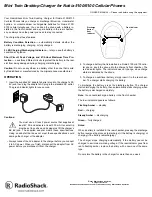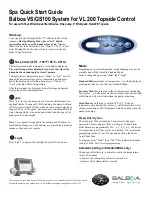
QuercusVL Programming Manual
changed)
Example of correct code (in C++)
detector=Unit(0).Detector(0) // Getting the detector
printf( …, detector.Id);
// First use of the detector
printf( …, detector.Type);
// Second use of the detector (it keeps being the same)
Example of correct code (in C)
detector = VL_Unit_get_Detectors_Item(unit, 0);// Getting the detector
printf( …, VL_Detector_get_Id(detector));
// First use of the detector
printf( …, VL_Detector_get_SummariesPeriod(detector));
// Second use of the detector (it keeps
// being the same)
VL_Detector_Release(detector);
// Releasing the detector
3.3. Classes
In C and C++ you need to call VLLoad ( ) function to load the library (before any other call),
and VLUnload ( ) at the end of program execution (after the last call to library functions) to
unload the library.
All boolean values documented for C++ library are translated to C library as:
C++
C
True
Integer different from 0
False
0
3.4. System Class
Represents the VL object hierarchy root.
3.4.1. Properties
●
Status
C++:
static bool get_Status ( )
C:
int VL_System_get_Status ( )
Returns system status. It will be true if all system components are working properly, or
false if an error exists in one of them.
●
Units
Quercus Technologies
27
















































